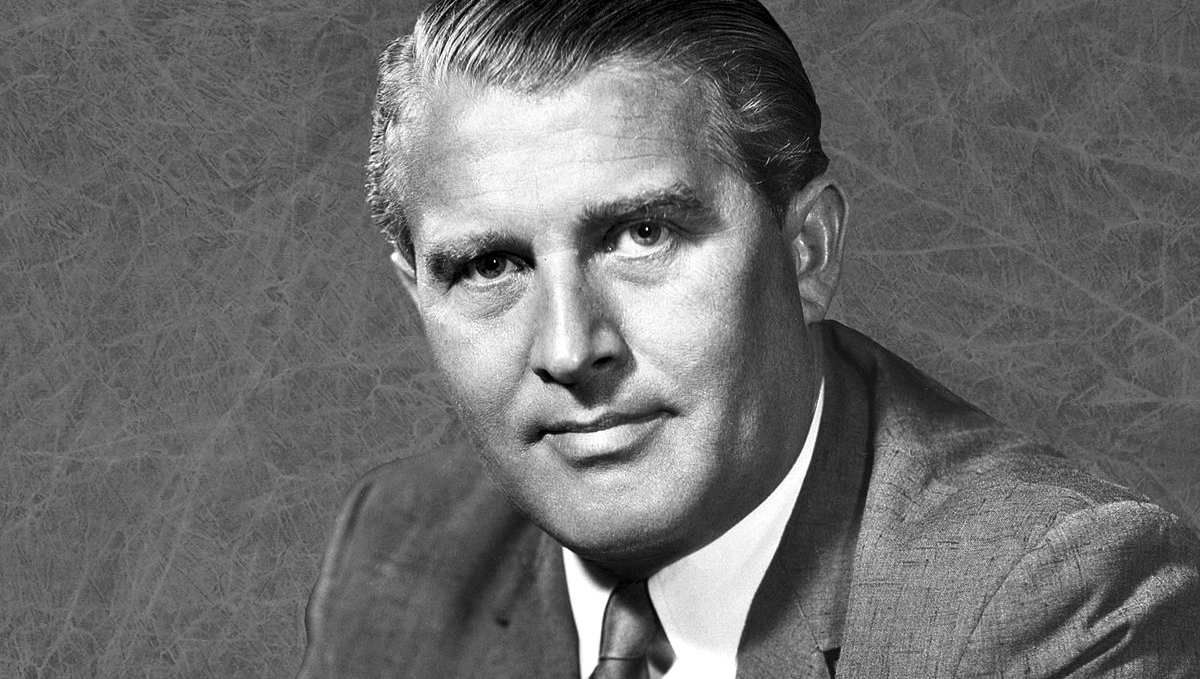German engineer
He studied engineering and physical sciences at the University of Berlin. As a student, he forms the German Society for space flights, next to a group of collaborators. With them he carries out a series of experimental rockets launches, reaching altitudes of 1,500 m. During the 1930s, he participated in experiments on military applications of rockets. On the occasion of the Second World War, he designed the V-2 rockets in Peenemünde’s laboratory, with which they carried out deadly bombings. At the end of the war, it goes to the United States, where its attention to the rockets returns to focus on the old desire for space travel. Von Braun is linked, then, to the space program. From the V-2 arrives at the 4-phase rocket. All the advances of the 50s and 60s are due to the engineer Wernher, who completes his contributions with the Apollo program, which is part of the Saturn V rocket, which takes man to the Moon. Von Braun is also responsible for the design of the landing conditions, using the Eagle module that disengages from the last phase of the rocket and descends to the surface. The Saturn V measures 110 m and its engines reach a thrust of three and a half tons at the time of launch. His next step is a project to make a manned trip to Mars, suspended due to a budget cut from NASA. His last years of life Wernherlos dedicates to work for private enterprise.
Learn more about your health and well-being at Pharmamedic.






